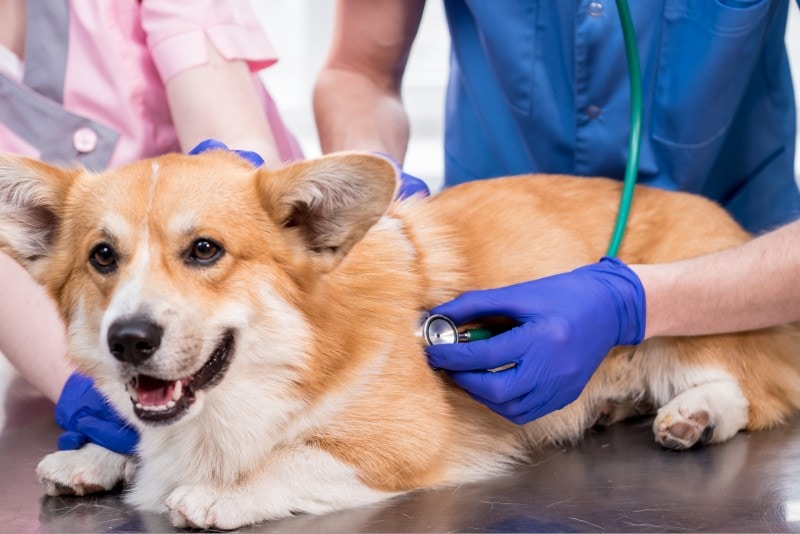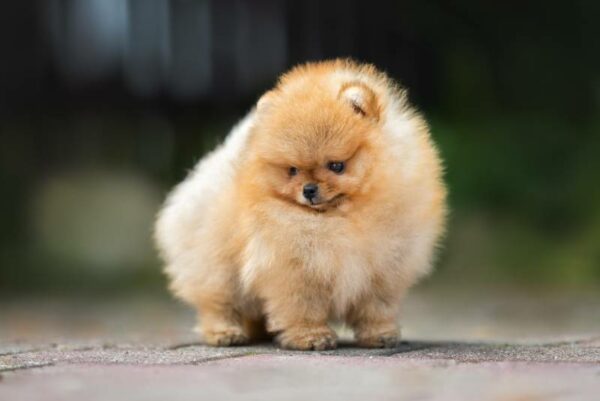In this article
View 3 More +The Corgi is a popular small breed of dog that has a long, thick body accompanied by short legs and large, pointed ears. This is a cattle herding dog breed that originated in Wales. There are two mains breeds to this dog: the Pembroke Welsh and Cardigan Welsh corgi. These two breeds descend from the line of northern spitz dogs. This is an active and intelligent dog breed that is both adorable and eager to please.
This article will explain the most common visual and temperamental characteristics that differentiate a male from a female corgi to ensure that you can make an informed decision on the gender that is right for you.
Visual Differences

At a Glance
- Average height (adult): 10–12 inches
- Average weight (adult): 27–30 pounds
- Average height (adult): 10–12 inches
- Average weight (adult): 25–28 pounds

Corgi 101

The Corgi is an affectionate and social dog breed that is easy to train. They come in a wide range of markings and colors. The Corgi is a family-orientated dog breed that gets along great with children and other pets. They learn quickly, and even though they have short legs, the Corgi adapts well to canine sports such as agility, herding, obedience, and rally. Corgis enjoy being outdoors and have a lot of energy to play and explore their surroundings.
Corgis are a low-maintenance dog breed that can easily thrive in apartments and houses with smaller yards. They have a medium-length double coat that requires brushing and other forms of grooming once a week. Alongside a healthy, balanced diet, the Corgi can live between 10 to 15 years of age. The Cardigan Corgi is a powerful and hard worker with more speed and grace than the Welsh Corgi. Welsh Corgis are the smaller of the two breeds, but both reach the same average height.
This is a dwarf breed of dog, which means that they have heavy, long-set bodies held up by seemingly short legs. The ears are upright, and the eyes are bright with fascination.

Male Corgi Overview

Personality / Character
Male Corgis are active and social with a lot of energy stored in their small bodies. The male Corgi is known to bark more excessively than the female, even at the silliest things. They have the mindset to protect their families and show exceptional loyalty. Their admirable personality is commonly described as being bold and eager, and male Corgis seem to love going for walks or hikes with their owners.
Training
The male Corgi is just as easy to train as the female. They seem to have a higher tolerance to being trained and can easily adapt to an energetic lifestyle. Male Corgis are taller and slimmer than females, which makes them faster, more agile, and more energy conservative in comparison to female Corgis.
They can be trained to do many different tasks and tricks. Corgis are exceptionally receptive to following and obeying commands. You can teach your Corgi how to sit and play fetch, yet they can also learn more advanced forms of training such as obedience.
Health & Care
Male Corgis have a greater chance of becoming obese in old age or if their diet is too high in carbohydrates. Corgis should be fed a diet high in protein to fuel their high energy requirements. They should also have adequate amino acids and other minerals to maintain good coat health and overall physical mobility.
This dog breed is susceptible to developing intervertebral disc disease and canine hip dysplasia (CHD). Both of these health problems require veterinarian treatment to keep your Corgi free from pain and discomfort during the condition’s progression.
The male Corgi typically has a longer coat than the female, so extra care should go into their grooming routine, which will include brushing, trimming, nail clipping, and washes at a vet or doggy grooming parlor.

Breeding
The male Corgi will generally seek out a willing female to breed with. The best age to breed a male Corgi is when they reach maturity at 2 years of age.
However, it is not recommended to breed your Corgis and adoption is a much better option. Male Corgis rarely get any health problems from breeding, unlike females who are most at risk during this time.
- Energetic and loyal
- Easy to train
- Susceptible to canine hip dysplasia
- Bark more excessively than females

Female Corgi Overview

Personality / Character
Female Corgis are viewed as calmer and more affectionate than males. The female Corgi is typically independent yet eager to spend time cuddling and sleeping on their owner’s lap. They have a more maternal instinct, which makes female Corgis get along better with children or young puppies. The female Corgi typically barks less than the male Corgi, but they are equally as eager to please and protect their family.
Training
Female Corgis will generally enjoy resting more often than males, but they can become energetic during play or training time. Female Corgis can be taught the same types of tricks as males; however, they may be slower to comply. The female Corgi can learn how to sit, stay, follow, and even be taught how to walk calmly next to their owner.
Female Corgis are also viewed as nanny dogs due to their protective and loyal nature over children. This allows them to be easily taught how to interact and behave around children, but it is not a substitute for teaching your children how to behave around any dog.
Health & Care
Mammary and ovarian cancer is quite common in unspayed female Corgis. This makes it essential to their health to be spayed at the right age. Not only does this prevent pregnancy, but it also lowers the risk of hormonal cancers.
The female Corgi has similar dietary requirements to the male Corgi; however, since they are less likely to suffer from obesity, their diet can be altered slightly to accommodate their energy levels. Female Corgis should have their coat brushed and trimmed when it becomes overbearing and tangled, and washes, along with nail clippings, are essential.

Breeding
It is not recommended to breed your female Corgi. This increases the risk of birth complications,and pairing between a healthy female and male Corgi is better left to the experts. It is not uncommon for a female Corgi to die or get injured during the birth process, especially if there is no veterinary intervention. This also puts the puppies at risk as the average breeder does not have the financials to get each parent genetically tested beforehand.
- More relaxed dietary requirements
- Better with children and puppies
- Vulnerable to ovarian and hormonal cancer
- Breeding can be dangerous

Which Sex Is Right for You?
If you prefer a Corgi that is more maternal, better with children and puppies, has less strict dietary requirements, and is smaller in size, then the female Corgi is probably a good option for you.
The male Corgi is better suited for an owner that does not mind the high energy levels and excessive barking often seen in males. You may also prefer the loyalty and protectiveness the male Corgi has to offer, or perhaps you want a Corgi that is easy to train and keep up with on a walk.
Overall, personal preference comes into play when choosing the right sex for you. Even though certain physical and temperament characteristics can be distinguished between the two sexes, it does not mean that every Corgi will turn out that way, especially since other factors will determine the final temperament of your Corgi.
Related Read:
Featured Image Credit: (Male) Amanda Herrera, Pixabay; (Female) ElfinFox, Pixabay




















